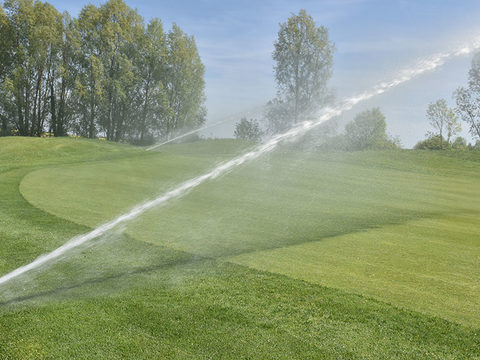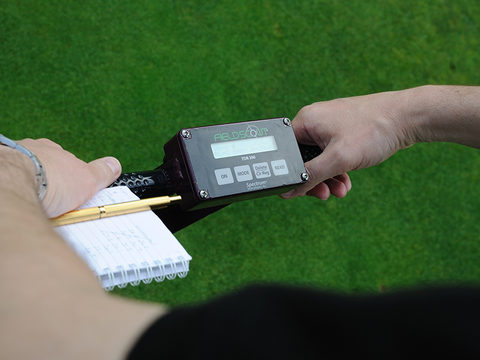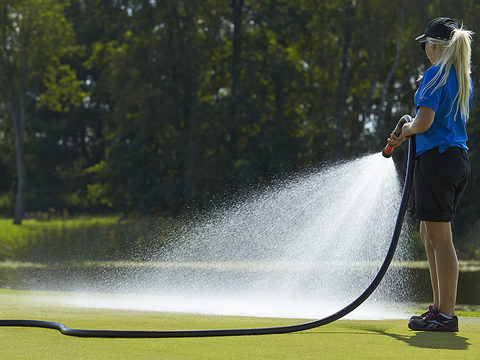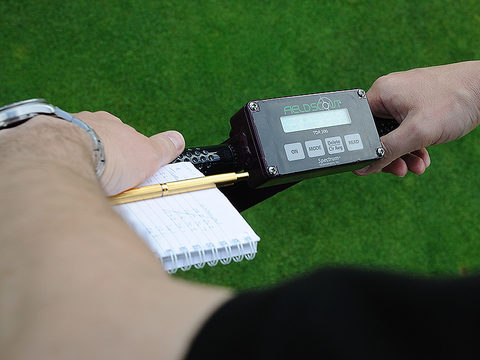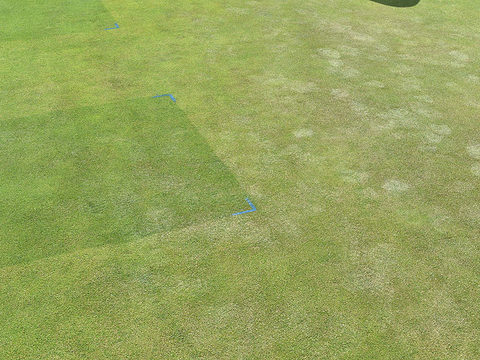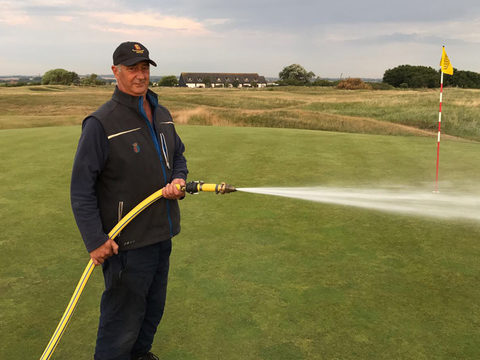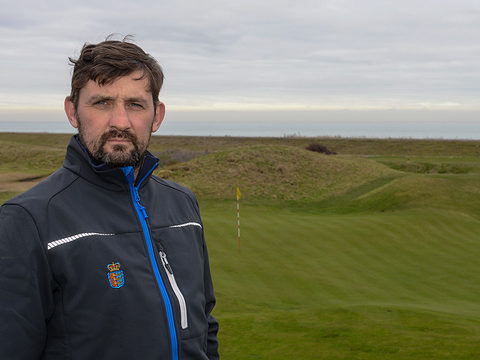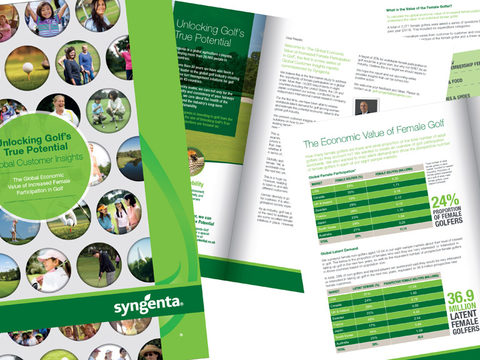Eau de Vie

For turf health water is, quite literally, life. Water is an essential component of photosynthesis. The hydrogen molecules in H2O convert the carbon in CO2 into glucose sugar (C6H12O6), in the presence of light energy.
Without that efficient photochemical activity, plants will begin to shut down – with all the effects that has on turf health and playing surface quality, writes Syngenta Technical Manager, Sean Loakes.
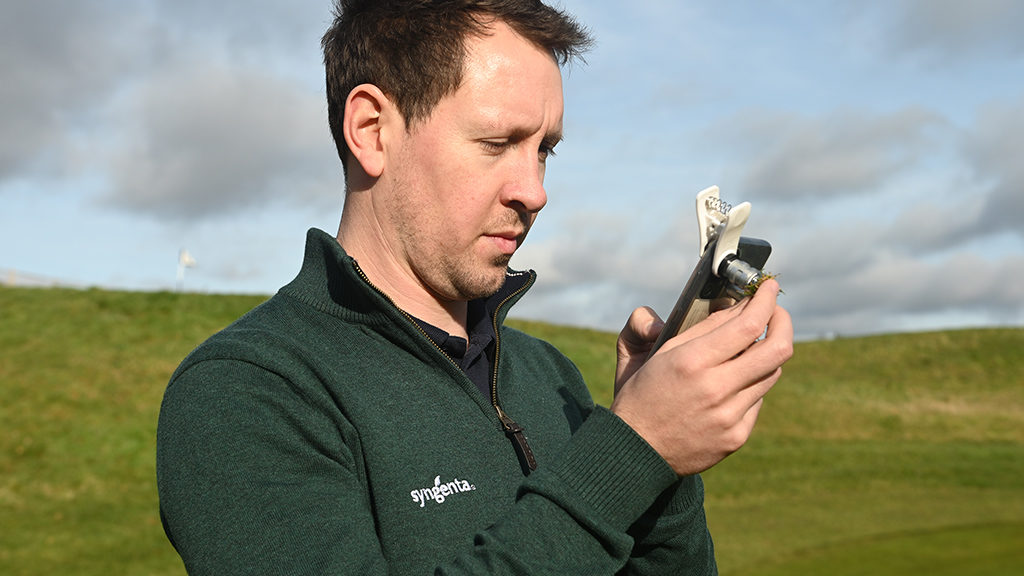
The key is when do those effects start to kick in. Although rainfall has been plentiful this winter, and in many instances excessive, once a soil is at field capacity it can no longer hold more water.
Soil dry down will still start to occur where evapotranspiration begins to be greater than rainfall, which can quickly end up with soil moisture deficits.
All soils will have their own particular starting point for the commencement of dry down in the early part of the season; soil texture, structure and bulk density will have an influence, along with the water use rates of the grass species in situ.
Weather records show many areas will typically start to go a period of dry-down time in Mid-March in the south of England, through to mid-April in Scotland. The rate at which it happens will depend on the weather conditions that year and the water holding capacity of the soil. This in turn leads to soils beginning to dry down and how quickly it develops.
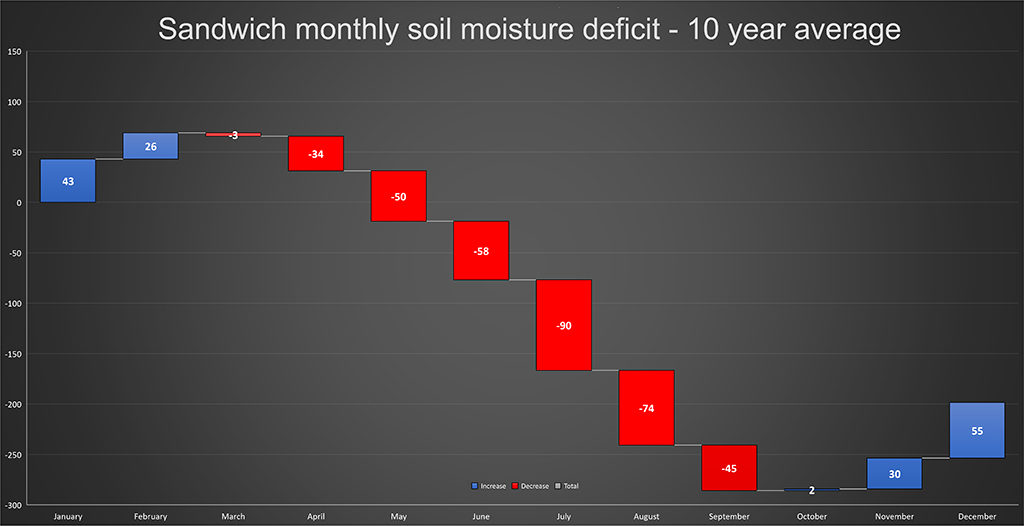
Although there will be some regional and seasonal variability for individual courses, the trend is clearly apparent (See Fig 1 showing a 10 year average for two contrasting sites, in Sandwich Kent, above and Ayr, Scotland, below - note differing scales).
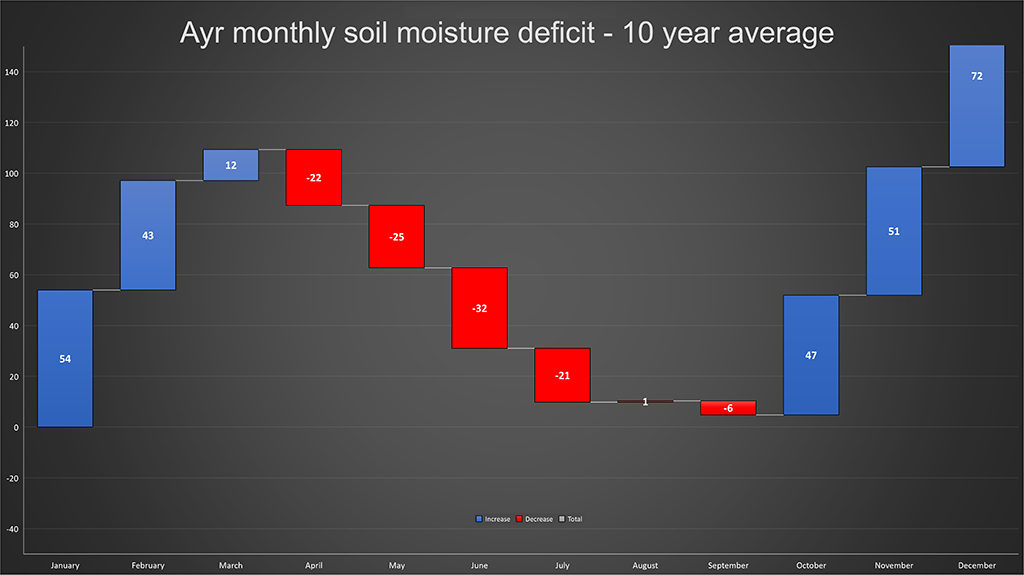
And with changing climatic conditions, it is particularly the early-season deficits that are becoming more pronounced earlier in the year, as well as extending later into the autumn.
For irrigated greens efficient watering scheduling can help to manage and mitigate the depth and extent of deficit issues. On unirrigated fairways, however, the implication of prolonged and extreme soil moisture deficits are having an ever greater impact on turf health.
Turf that could survive the occasional extreme is now being subjected to intense pressure and damage almost every season, potentially coupled with increasing temperatures.
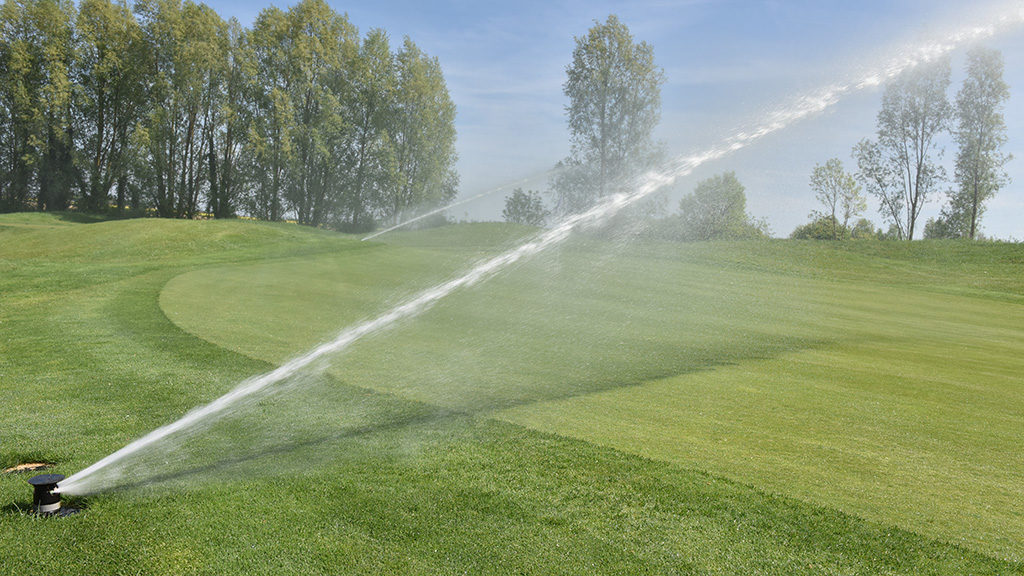
Investing in soil moisture management on fairways could have one of the greatest paybacks in overall turf health and course condition through the year.
Assessing soil moisture deficit patterns over recent seasons has highlighted management is better focused on early season intervention, when there is still some moisture available to utilise and conserve, compared to waiting until mid-summer when conditions are so dry that damage has already been done.
Greenkeepers focus and management efforts are better placed to delay the soil moisture deficit until later in the season, thereby increasing the plants ability to be able to resist stress.
At the same time reducing the duration that turf plants are under stress before autumn rainfall arrives. Using a Qualibra wetting agent treatment to manage the moisture deficit effects later in the season could have profound implications for improved turf health and long-term fairway quality.
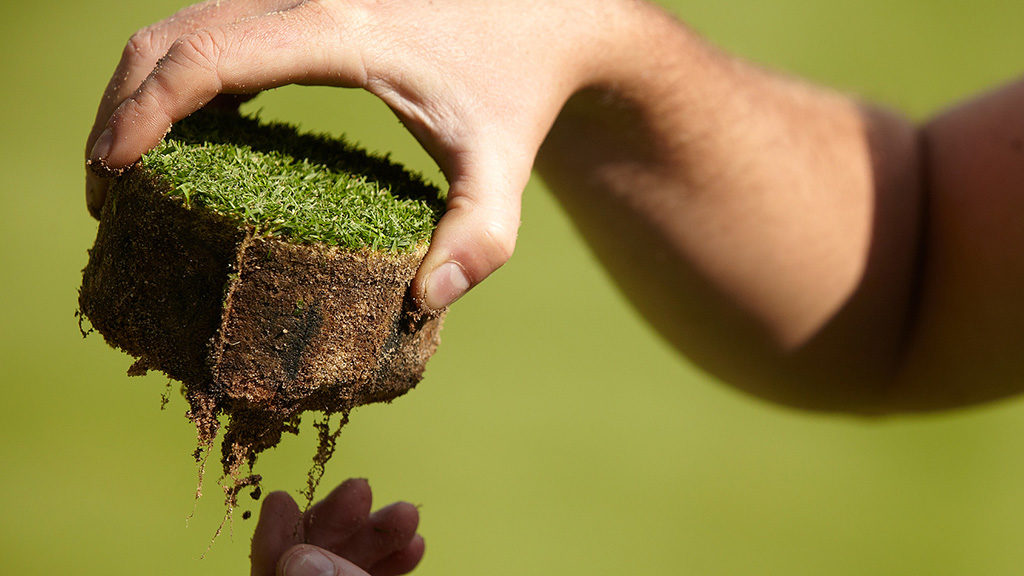
As the physiological impact on plants begins, even temporarily, leaves lose turgidity, making them more susceptible to damage and noticeably in reduced clip quality when mowing.
If photosynthetic energy generation continues to decline, plants start to draw on energy stores previously laid down – primarily as carbohydrates in roots. Root decline in summer is a natural response and well documented, with research showing turf can typically lose up to 60% of root mass year on year.
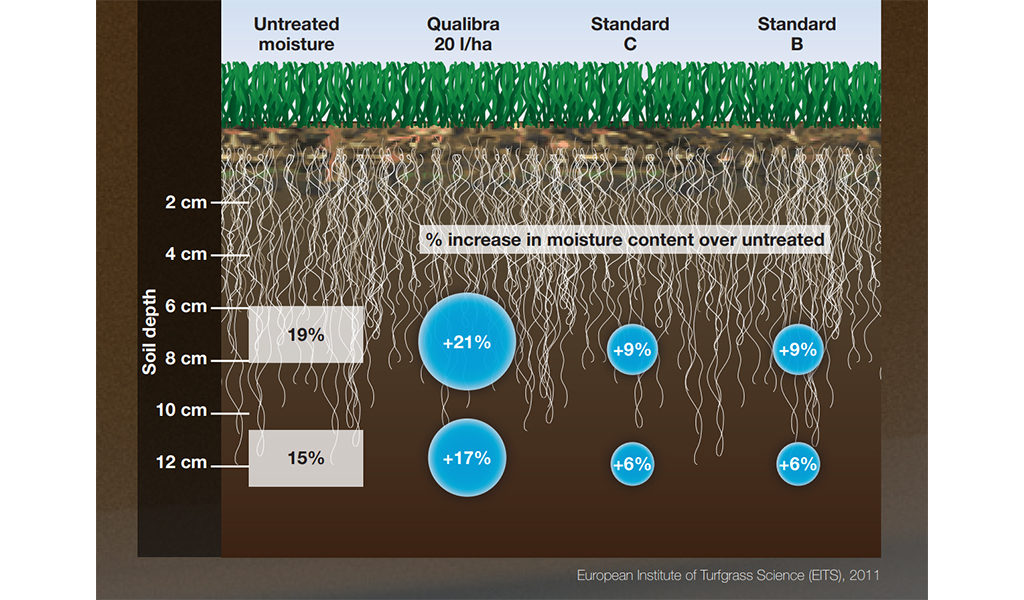
Research trials at the European Institute of Turfgrass Science have shown that soils treated with Qualibra can hold over 20% more moisture at a depth of 6 – 8 cm, and 17% more at a depth of 10 – 12 cm, compared to untreated. That was more than twice as effective as other wetting agents in the trials.
Furthermore, for efficiency of water utilisation, after dry down it took up to 50% less water to return soil moisture to an optimum 15 – 20% with Qualibra treatment, compared to other wetting agents in trials. Research has shown it encourages greater root mass, with deeper roots and better root retention.
Disease impacts
Anthracnose has long been associated with a combination of stresses on turf plants over the summer, with moisture deficit being one of the primary factors, along with heat, light, nutrition and physical damage. Alleviating any of the stress points will help to reduce the risk, but moisture management should be on the priority list.
Over recent seasons, Dollar spot has been reported as an increasing issue.
The pathogen thrives when underlying soil conditions are dry, but leaf surfaces are wet with dew or rain. When day temperatures exceed 20⁰C, multiple small pale lesions appear, which can quickly coalesce into large areas of significant turf loss. Poa and fescue fairways are most susceptible to attack, particularly if fertility is low.
Historic disease risk records for summer 2022 reveal even in the drought conditions, spikes of Dollar spot pressure occurred repeatedly through May, July and an extended period of August. Records for 2020 and 2021 show similar patterns. For fairways an ITM approach can minimise the risk, but where there is a history of damage or Dollar spot symptoms break out, Instrata Elite has a label approval for control.
Fairy ring is also becoming more evident for many courses. As overall turf health and colour is impacted by moisture deficit conditions, so the dark green growth rings initiated by soil fungi activity become more visually apparent.
An integrated approach, to manage soil conditions, moisture and fertility is equally important as a Heritage fungicide to target the soil-borne pathogens.
Pest targets
Research is also showing that soil moisture management could have a significant role in the success of soil pest programmes, particularly on fairways. When soil conditions are dry, the pest larvae of leatherjackets (below) and chafer white grubs tend to move further down in the soil profile. That makes them hard to target with either Acelepryn insecticide applications or beneficial nematode treatments.
Maintaining soil moisture in the upper parts of the soil profile has been shown to effectively attract pests into a target treatment zone in the top 6 cm. Furthermore, a film of moisture around soil particles is critical for beneficial nematode survival and movement to seek out larvae pests.



